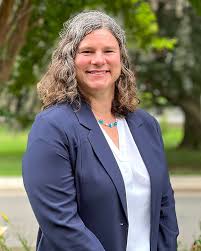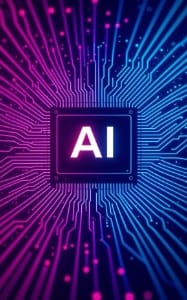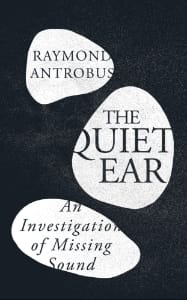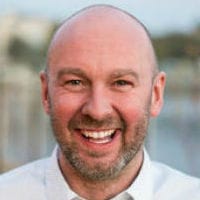Deaf leaders, educators, and artists continue to drive change across higher education, technology, and culture. This collection of stories captures how new initiatives, research, and creative projects are reshaping opportunities for the Deaf and Hard-of-Hearing community in 2025.
NTID Names First Female President

We had previously reported that Dr. Caroline Solomon would become the first female president of the National Technical Institute for the Deaf (NTID) at RIT (see our earlier coverage here). On August 18, 2025, she officially stepped into the role, marking a historic milestone in Deaf leadership in higher education.
The Rochester Beacon recently published an interview with Dr. Solomon (you can read it here) that offered insight into her vision for NTID. She highlighted three priorities: expanding pathways in education, employment, and leadership; collaborating with students, faculty, and staff; and exploring opportunities for partnerships with the Rochester community, which has one of the highest per-capita Deaf populations in the United States.
Dr. Solomon also reflected on her leadership journey, from serving as a department chair and school director to her most recent role as dean of faculty at Gallaudet University. Each step, she explained, helped her grow as a leader and prepared her for this new chapter. Her scientific background in ecology complements her higher education experience, giving her a distinctive perspective on both research and administration.
The Deaf community has celebrated her appointment as an important representation milestone. Many view her presidency as an opportunity to expand innovation and ensure NTID continues to be a global leader in Deaf education. With more than 1,100 students and 11,000 alumni, NTID’s future under her leadership looks promising.
Gallaudet Launches AI Accessibility Center
Gallaudet University announced on August 18, 2025 the creation of its Artificial Intelligence Accessibility and Sign Language Center. The new research hub is designed to integrate artificial intelligence with ASL and improve access for Deaf and Hard-of-Hearing students. It also seeks to ease interpreter shortages by developing tools that can supplement human interpreting services.
The center is part of a growing movement to ensure accessibility is addressed at the research and development stage of technology rather than after products are already built. Gallaudet’s leadership explained that AI is intended to support human interpreters rather than replace them. In settings such as healthcare, emergency response, and virtual reality applications, access often remains inconsistent, and the center’s work could provide new options.
There is both optimism and caution within the Deaf community. Previous attempts at sign language avatars have been criticized for lacking accuracy or cultural nuance. With the center housed at a Deaf-led institution, researchers hope to align design with authentic language use and Deaf cultural perspectives. Collaboration with global partners is also planned to account for signed language diversity.
For students, the project could mean new classroom tools, smarter captioning, and ASL-integrated digital learning spaces. For the advocacy community, the development represents an example of technology being shaped by Deaf leadership from the outset.
Interpreter Burnout Reported in Higher Education
On August 20, 2025 the National Deaf Center published research that highlights high levels of burnout among ASL interpreters working in higher education. The study pointed to heavy workloads, limited preparation time, and the emotional demands of interpreting as significant risk factors. Many interpreters report feeling under-supported by institutions.
For Deaf students the consequences are clear. Burnout leads to less reliable access to lectures, labs, and extracurricular programs. The report recommends actions such as fairer staffing models, trauma-informed supports, and compensation for class preparation. These measures could improve retention of interpreters and protect the quality of access services.
Interpreter advocacy groups have voiced similar concerns for years. Interpreting is highly cognitive work that requires constant attention and adaptability. Without systemic support, attrition rates rise and shortages worsen. The NDC study provides concrete evidence that administrators can use to adjust policy and practice.
This research arrives at a time when more Deaf and hard of hearing students are entering degree programs. Institutions will need to expand support services to meet demand. Failure to do so may lead to wider inequities.
The report reframes interpreter wellbeing as a fundamental part of educational equity. Disability offices and agencies that respond quickly may not only stabilize services but also strengthen trust between students and institutions. As one student noted in a forum, “Healthy interpreters mean higher GPAs.”
Shoshannah Stern Directs Marlee Matlin Documentary
Vanity Fair profiled Shoshannah Stern on August 20, 2025, highlighting her directorial debut with Marlee Matlin: Not Alone Anymore. Stern is a Deaf actress and writer whose work has consistently promoted authentic representation of Deaf lives. Her documentary about Marlee Matlin uses film techniques that elevate ASL.
Camera framing focuses on hand movements and upper body signing. Captions are styled as part of the visual composition rather than added as an afterthought. These creative choices respond to long-standing community requests for media that treats ASL as a core language and art form.
Deaf audiences have expressed enthusiasm for the project. Many see it as proof that authentic representation requires Deaf creatives behind the camera as well as on screen. The film also expands the professional legacy of Matlin, who remains a symbol of Deaf visibility in entertainment.
The work should influence how studios think about accessibility. If successful, Stern’s documentary could encourage producers to adopt similar practices in future films and series. Advocates will be watching closely to see whether this project is followed by broader commissioning of Deaf directors. Finally a documentary where captions are not playing catch up.
Raymond Antrobus Highlights Deaf Gain
On August 19, 2025 poet and educator Raymond Antrobus appeared on KUOW to discuss his new memoir The Quiet Ear (out August 28th). Antrobus is a British Jamaican Deaf writer whose work often examines identity, belonging, and language. In the interview he emphasized the concept of “deaf gain,” a framework that presents Deafness as an asset rather than a limitation.
He described ways in which Deafness enriches communication and creativity, from stronger visual literacy to deeper community connections. He argued that policy language often frames Deaf people in terms of “loss,” which can influence everything from healthcare to workplace equity. Shifting toward “deaf gain” could help reshape institutional practices.
Antrobus also highlighted the intersectional nature of his experience. He discussed how race and culture interact with Deaf identity, and how BIPOC Deaf voices are sometimes overlooked in mainstream narratives. His commentary adds important perspective to advocacy conversations, reminding audiences that Deaf communities are not monolithic.
The interview reinforced the idea that representation involves more than visibility. It also depends on the frameworks through which Deaf lives are described. Or as Antrobus’s humor suggested, a glass of “hearing loss” may look half empty, but with “deaf gain” the same glass can be seen as full of poetry and new design.
Shifts in Deaf Advocacy
The news this week featured strong developments across Deaf higher education, technology, and cultural representation. Leadership transitions were a major theme. Dr. Caroline Solomon’s appointment at NTID marked a milestone in representation for Deaf women in STEM leadership, while Gallaudet’s AI accessibility center showed how research can align with authentic community needs.
Interpreter burnout research underscored the importance of human sustainability alongside new technology. Meanwhile, Shoshannah Stern’s documentary and Raymond Antrobus’s reflections highlighted the impact of authentic storytelling and reframed narratives that celebrate Deaf perspectives.
The overall trend suggests that progress requires balanced investment. Institutions must continue to strengthen leadership and funding, expand technological inclusion, and protect interpreter wellbeing. For advocates the message is clear. Long-term change depends on recognizing Deaf expertise as central to leadership, research, culture, and representation.









